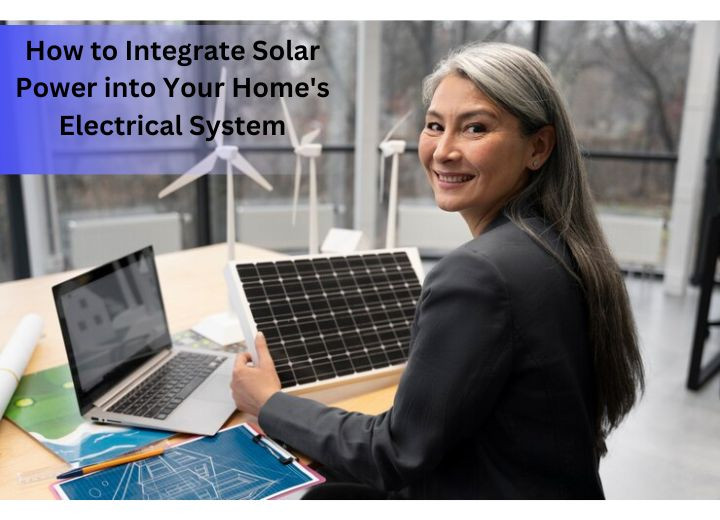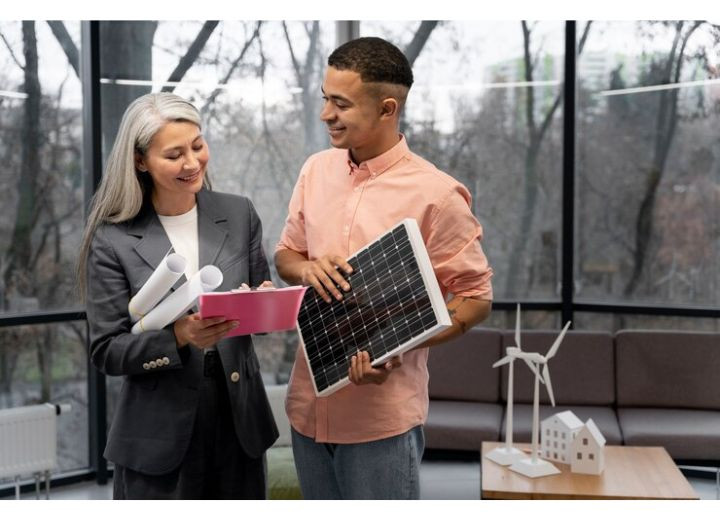How to Integrate Solar Power into Your Home's Electrical System
Posted on August 28, 2024 by Admin

You can make integration of solar power into your home electrical system a wonderful way to cut down on energy costs, enhance energy independence, and promote environmental sustainability. With the rapid changeability rate that characterizes solar technology, it becomes more accessible and rewarding to integrate solar power in your home. Here is a guide on how to effectively integrate solar power into your home's electrical system.
Understand Your Energy Needs
The first step toward integrating solar power into your home's electrical system is to assess your energy needs. Look at previously paid utility bills you should be in a position to know the average daily/weekly/monthly/annual energy consumption. Use this to determine the size and capacity of solar power to use. With a realization of your energy needs, assure yourself that you will be sizing and installing a solar system that is adequately scaled to meet the demands of your household.
Evaluate Your Home's Solar Potential
Next, let's evaluate the solar potential for your home. As a matter of fact, the success of a solar power system relies on the orientation of your roof, shading, and the amount of sunlight that actually reaches your home. Solar panels should optimally be mounted on a roof oriented to the south with minimal shading from trees or other structures. A professional installer of solar systems can perform this kind of assessment in detail to establish how and where your solar panels will work best.
Choose the Right Solar Power System
Now, very important is the correct choice of a solar power system. Available solar power systems are grid-tied, off-grid, and hybrid.
Grid-Tied Systems
These are systems that are connected to the local utility grid. It enables drawing of electricity from the grid while solar power is insufficient, and also you can feed excess solar energy back into the grid, which usually earns credits on your utility bill.
Off-Grid Systems
These systems have no tie to the utility grid and are fully supported by solar power and battery storage. These would be ideal in remote areas or locations where one prefers complete energy independence.
Hybrid Systems
Hybrid systems are a mix between grid-tied and off-grid systems. They offer solar and battery storage while using the grid for back-up power.
Install Solar Panels and Inverters
With this, you have already chosen a solar power system; the next thing is to install solar panels and inverters. Solar panels produce DC electricity from sunlight, while an inverter is required to convert the DC into AC electricity, thus making it usable by most of your home appliances. Make sure you get it installed by a qualified professional so that you have proper, efficient operation of your solar power system and you will comply with any local requirements.
Integrate with Your Home’s Electrical System
The tying in of the solar power system to the house's electrical system is achieved by connecting the solar panels to the existing electrical system. An electrician or an installer can thus connect it into safety, ensuring the system links correctly with the electrical code. This allows for self-generated solar electricity to the running of a home and provides effective management in energy use.

Monitor and Maintain Your Solar Power System
Once the solar power system is installed, monitoring the performance and doing regular maintenance are important in keeping the efficiency of the system running at its peak. Most solar power systems built in the modern day come with in-built monitoring tools that are used to track energy production and consumption. Do periodic maintenance checks to make sure your solar panels are clean and working perfectly.
Financial Incentives to Consider
Finally, investigate financial incentives for installing solar power. Many regions offer tax credits, rebates, and other incentives designed to reduce the expense of installing solar panels. Financial benefits can significantly offset the capital needed upon installation and, in turn, increase the long-term savings of any solar power system.
Must Read : The Future of Smart Home Electrical Systems
Conclusion
Solarizing your home's electric system is valuable and can lead to huge savings on energy expenses and a cleaner environment. The knowledge of one's requirements for energy, assessing one's solar potential at home, proper choosing of the right system, installation, and maintenance will let you effectively harness the power of the sun. With some thoughtful and good advice, solar power can become an important part of your home's plans for energy.
Faqs
-
1. How can I estimate the size of the solar power system required to meet my home's needs?
You will be able to determine your home's energy requirements by looking back at your previous utility bills to establish how much, on average, has been consumed. Using this information allows you to determine the size and capacity that a solar power system should be to ensure it meets your household's energy effectively.
-
2. What factors affect my home's solar potential?
Your home's solar potential is affected by the roof orientation, treetop or building shading, and the amount of sunlight your home receives. For maximum production, solar panels should face south with as little shading on a roof as possible.
-
3. What types of solar power systems exist?
The major classes of solar power systems are grid-tied, off-grid, and hybrid. Grid-tied systems include backfeeding into a utility grid; that is to say, when extra energy is generated, it gets fed back into the utility grid. Off-grid systems work totally independent of the grid, no matter how large, with battery storage. Hybrid systems combine both with solar power and battery storage while remaining tied into the grid.
-
4. How are solar panels installed?
Installation involves mounting solar panels to your roof, connecting them to an inverter that will convert DC electricity produced by the panels into AC electricity, and lastly, integration of the system with your home's electrical wiring. Professional installers ensure a proper setup in accordance with all local regulations.
Recent Post
- Top Plumbing Service Providers in Arizona, USA
- Top 10 Electrician Service Providers in Alabama, USA
- Top 20 Roof Repair Service Providers in Alabama, USA
- The Role of Roof Insulation in Energy Efficiency: Tips and Tricks
- Understanding Roof Damage from Wildlife and How to Prevent It
- How to Choose the Best Roofing Contractor for Emergency Repairs
- Roofing Maintenance for Historic Homes: Preserving Architectural Integrity
- The Importance of Proper Attic Ventilation for Roof Health
- How to Identify and Prevent Roof Mold and Mildew
- The Best Practices for Removing Snow from Your Roof